Top 15 Fun & Quick Games to Play in the Classroom 2025
We have all been in a class that seems like it is taking forever, and then the teacher comes and says now it is game time. Suddenly, the previously dull atmosphere in the classroom became lively.
If you want to add fun to your teaching and create interactive channels for children, please take a look at these 15 best fun games to play in the classroom.
Top 15 Fun Classroom Games to Play in Class 2025
Classroom games not only add fun to the teaching plan, but also help teachers establish a stronger connection with students. Let's take a closer look at each of the simple and quick class games in detail.
| Game Name | Use of Props | Participants | Game Type |
|---|---|---|---|
| Charades | None | 2+ | Creative Thinking Game |
| Hot Potato | Any small object | 5+ | Movement-Based Game |
| 20 Questions | None | 2+ | Creative Thinking Game |
| Heads Up, Seven Up | None | 6+ | Icebreaker Game |
| Pictionary | Paper, Pen, Whiteboard, Whiteboard markers | 4+ | Creative Thinking Game |
| Simon Says | None | 5+ | Movement-Based Game |
| Classroom Jeopardy | Pre-made question cards, Board | 2+ | Educational Game |
| Around the World | Flashcards or Paper | 2+ | Educational Game |
| Printable Mazes Game for Kids | Printed Mazes | 1+ | Educational Game |
| Minute To Win It | Various small props | 2+ | Movement-Based Game |
| Marshmallow-and-Toothpick Challenge | Marshmallows, Toothpicks | 2+ | Creative Thinking Game |
| Four Corners | None | 4+ | Icebreaker Game |
| Thumb Ball | Ball | 5+ | Movement-Based Game |
| Dictionary | Paper, Pen | 2+ | Educational Game |
| Spelling Bee | Flashcards or paper | 2+ | Educational Game |
1 Charades
Charades may be one of the most entertaining games to play in class. All you need is a pack of index cards to play this game. You can divide the class into four or five teams or play charades as a whole.
On the index cards, write a list of terms associated with your lecture, ones that can be acted out. Put the cards on a desk in the front of the room and ask each student to come forward and read a card to the class. The student must then mimic with actions whatever is on the card. The rule is that they are unable to speak while acting!
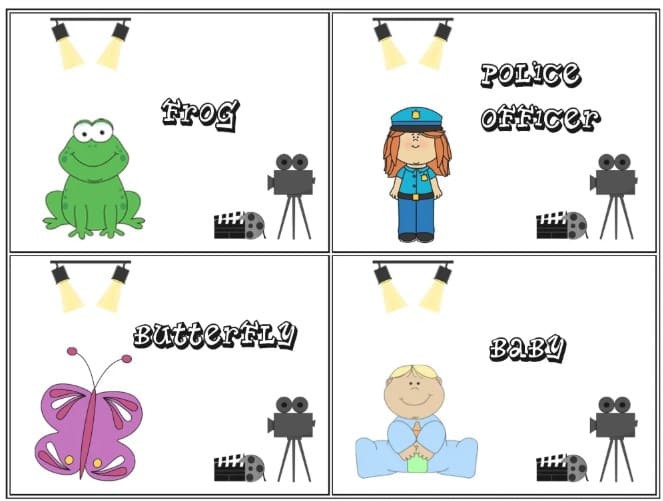
Students might shout or raise their hands to indicate what they believe the performer is attempting to depict. The next word can be acted out by the person who makes the right guess.
You can give each group a stack of cards with the same words and ideas if you're playing charades in groups. Each team then competes to be the first to accurately guess every phrase.
2 Hot Potato
If there's one game that instantly gets everyone out of their seats and laughing, it's Hot Potato.
The first time I tried this in class, I was a little skeptical. Could something so simple actually keep a room full of energetic kids focused? But it absolutely did. In fact, it turned into one of those quick games to play in the classroom they begged to play again during every rainy-day recess.
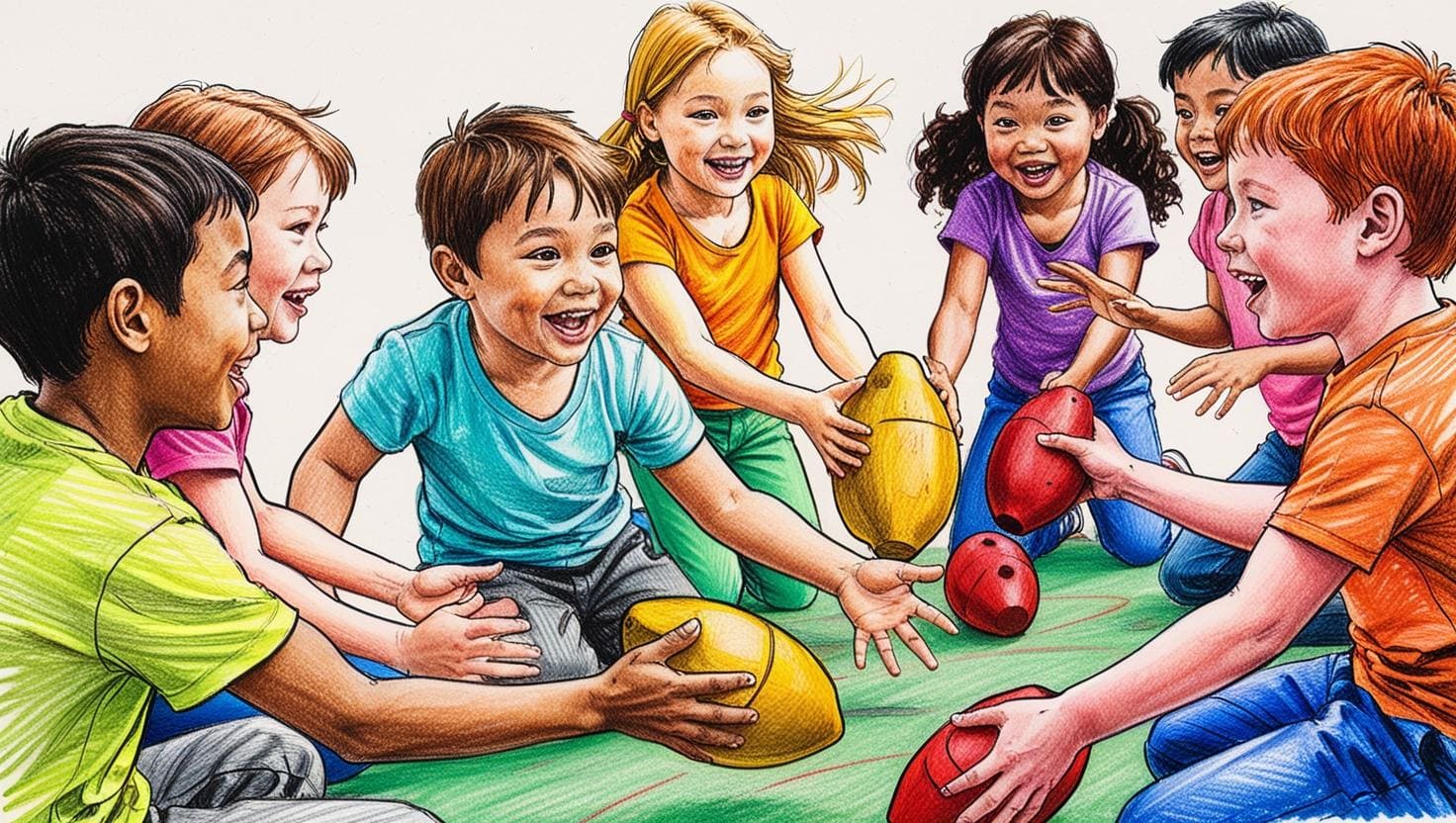
We all sit or stand in a circle. I crank up some music, and we start passing a ball, a beanbag, or honestly whatever's handy (the potato) around the group as fast as we can.
When the music stops, whoever's holding the potato is either out, has to answer a funny question, or do a goofy dare. The last one standing is the winner.
It gets kids moving, thinking quickly, and working together without even realizing it. Plus, it's hilarious watching them panic-pass the potato like it's actually hot lava.
3 20 Questions
I have this game handy for those surprise free minutes between classes. One student thinks of a noun—any noun: concrete, abstract, or collective.
The rest of the class has 20 turns to pose yes-or-no questions in order to guess what was thought of, as in "Is it closer than my house?" "Is it larger than a shoebox?" "Does it make noise?" At times, the guesses are wild; at others, the deductions prove keen. Whoever correctly guesses the word plays next.
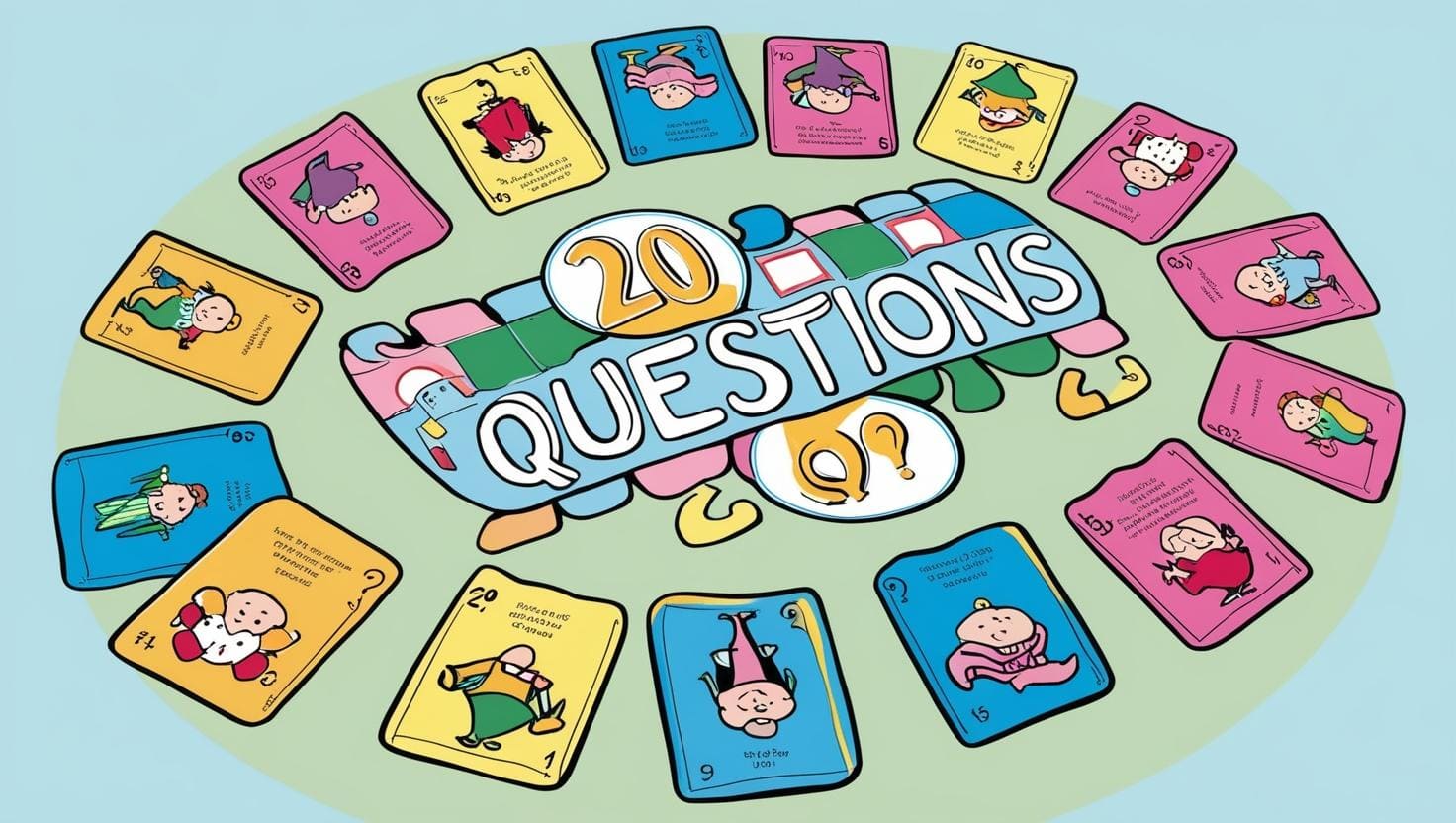
I like to set a little timer for each question to keep the pace snappy and the energy high. Trust me, it turns into a race that keeps even the most distracted students glued to the game.
4 Heads Up, Seven Up
Heads Up Seven Up is the ideal classroom game for fun. This game is excellent for developing critical thinking and logical reasoning skills.
Everyone in the classroom should lay their heads down and give the thumbs up once seven pupils are chosen to be the first "pickers." Before declaring, "Heads up, seven up!" each picker selects a single individual and taps them. Each person who was tapped has one chance to determine who selected them.
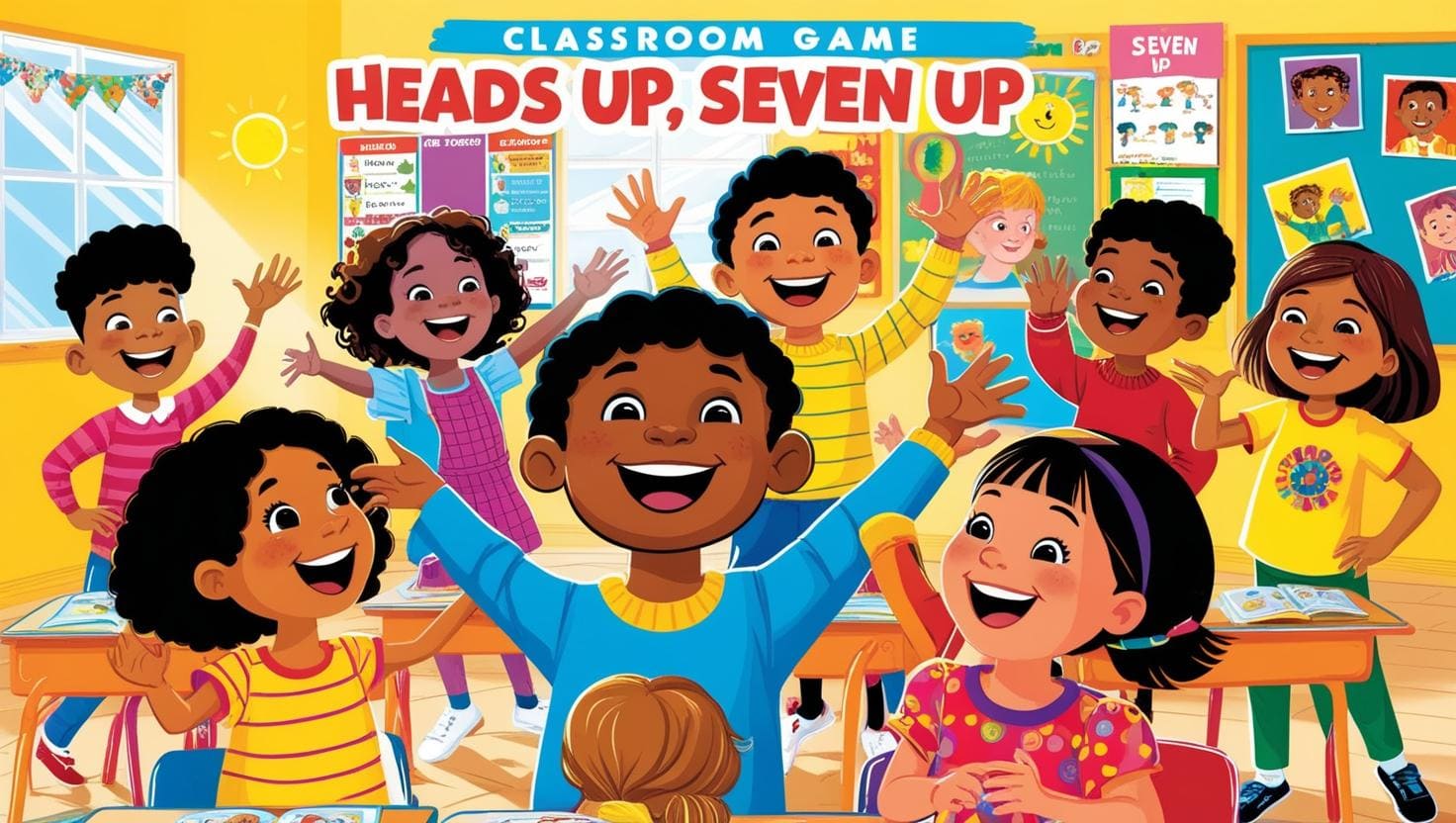
The student who correctly guesses gets to pick anyone in the next round, while the other kid sits down. If the student makes a wrong guess, the kid who selected them stays a picker in the following round.
Heads Up, Seven Up has this sneaky genius way of mixing movement, suspense, and observation skills. Kids are watching, noticing footsteps, remembering who's wearing those clicky shoes or who's extra quiet. It's a low-prep, high-engagement game.
5 Pictionary
This timeless game encourages all pupils to connect with their creative side and benefits children who learn best visually.
For this game, divide your class into three or four groups. Assign each group either a whiteboard and marker or a pad of paper and pencil. From each group, select one student to serve as the round's artist. Create a list of the terms you covered in class and either show each artist the words on paper or whisper them to them.
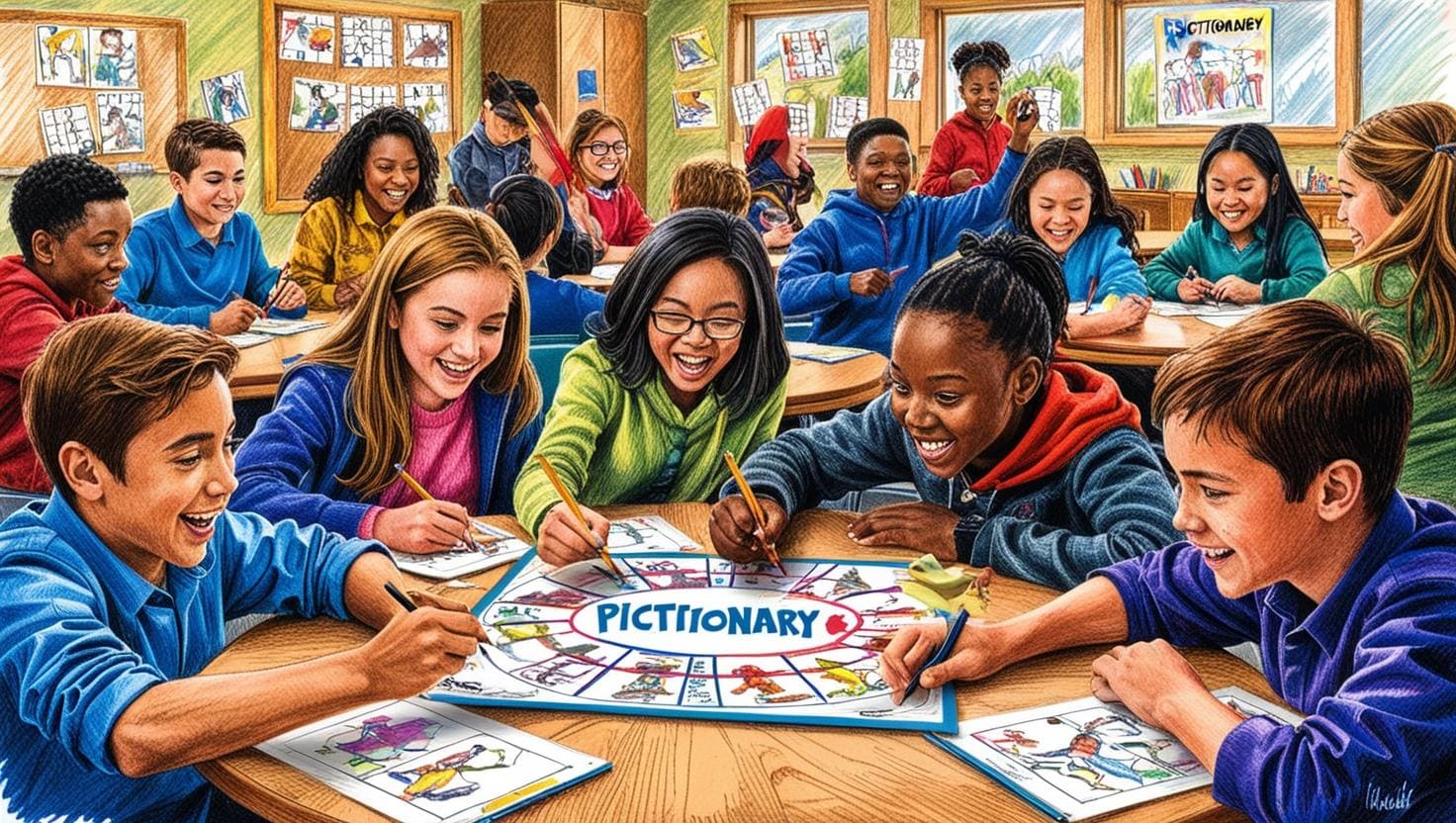
After that, set a timer and start drawing! The artist must sketch it silently while their teammates attempt to accurately identify the word before the allotted time runs out. The winning team is the one that predicts correctly first.
This game works well with phrases or concepts that are easy to visualize, and it's a great option for review days.
6 Simon Says
Simon Says is one of the fun games to play in class with toddlers. It works best with more than 10 people.
Select a player to represent Simon. The other players must do as Simon directs when he makes an order that begins, "Simon says." A player loses the game if they don't follow the directions correctly. The winner is the final player remaining!

7 Classroom Jeopardy
You probably know Classroom Jeopardy if you've ever watched the game show "Jeopardy!" which is a quiz program. Your pupils will enjoy this point-based game of questions and answers. Children learn how to cooperate to accomplish a goal from this game as well.
Prepare a list of questions in big flashcards. If your classroom has access to a projector and screen, that would be even better. Every question has a point value between 100 and 500, with the most difficult questions having the highest point value.
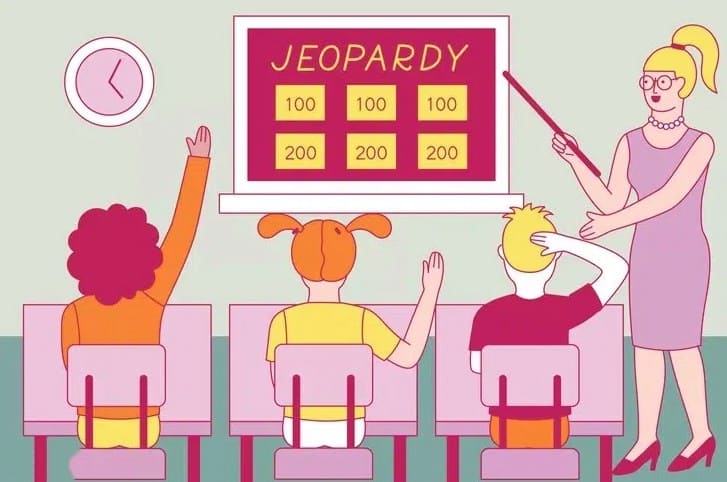
Create teams in your classroom; three is the best number, but you can change it based on the size of your class. Show the Jeopardy board on your projector screen. Assign a starting squad and let them choose the subject and level of difficulty. To read the question out loud, click on it.
Let your pupils respond to the question for 30 seconds. Take points away from their score if they answer incorrectly or are unable to respond. The question should then be passed to the following team. Add the points to their score if they get it right. At the end, the team with the highest score wins.
8 Around the World Review Game
Few fun games to play in the classroom bring the buzz of excitement like Around the World Review Game. If you're looking for a game that turns everyday review into a high-energy event, this is the one. It's simple, fast-paced, and sneaky-smart.
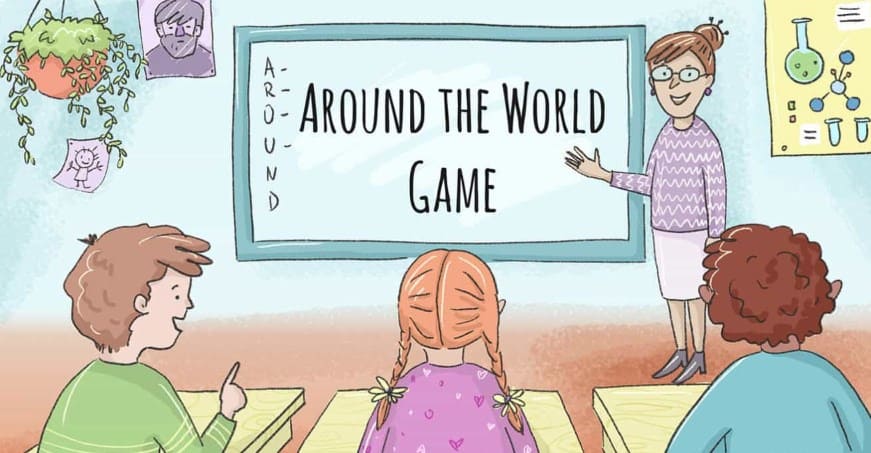
One student stands behind another student's desk. You present a flashcard — it could be a math problem, a vocabulary word, or a trivia question. The student who answers correctly first moves on to the next desk, trying to "travel" all the way around the classroom by beating each classmate along the way. If they lose, they sit, and the winner continues.
Around the World keeps every student sharp and ready. It reinforces quick recall, builds confidence, and turns reviewing into something they actually look forward to.
9 Printable Mazes Game for Kids
Mazes come in various difficulty levels, making it easy to match the right one to your class's age and skill. No special supplies are needed, just a printer, paper, and pencils.
Hand out printed maze sheets and challenge students to find their way from start to finish. You can set a timer to add a sense of competition or let students work at their own pace.
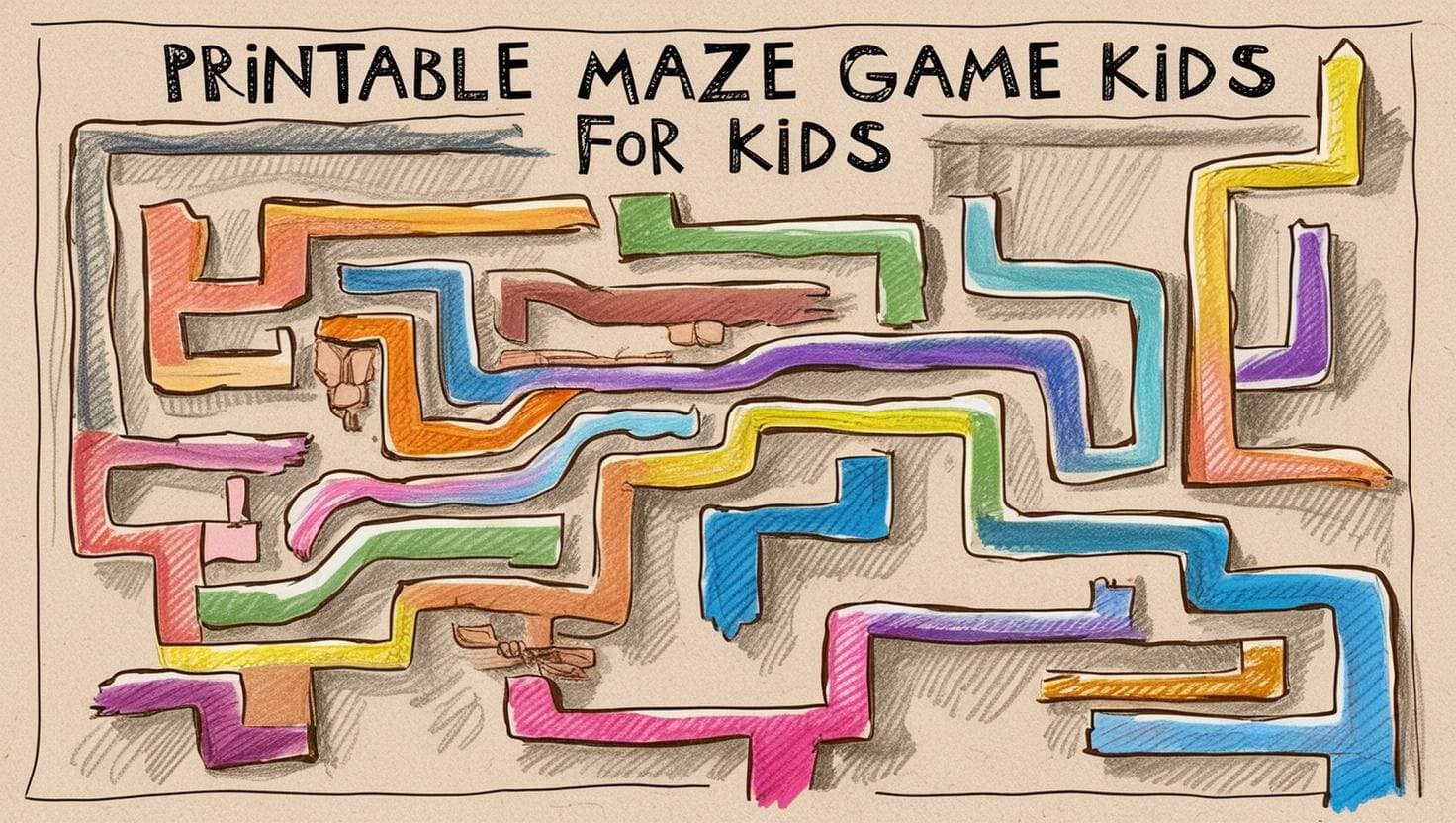
10 Minute To Win It
A Minute to Win It Games receive their name from the fact that they only take a minute to complete. You can choose from a variety of challenges, like stacking cups, balancing objects, or completing a puzzle, and adapt them based on the materials you have available.
The timer adds pressure, which increases excitement and encourages teamwork if done in groups.
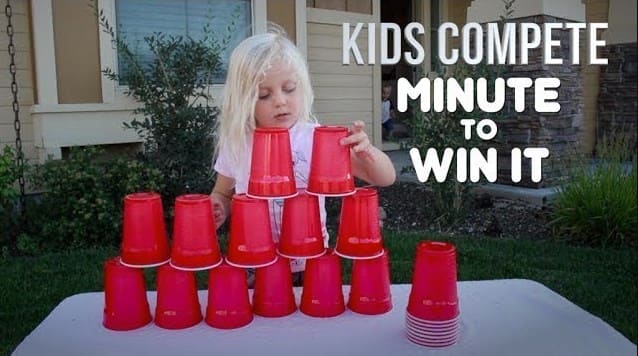
11 Marshmallow-and-Toothpick Challenge
This is one of the interactive games to play in the classroom to improve socializing. A couple bags of marshmallows and toothpicks are required for this task. Older school-aged children are better suited for this activity because toothpicks can be dangerous.
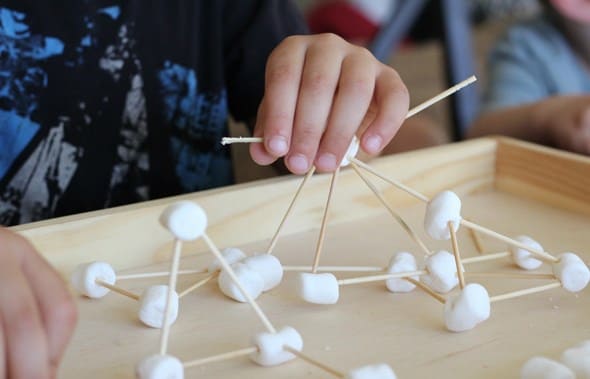
Divide pupils into groups of four to five to get them ready for the Marshmallow-and-Toothpick Challenge. Distribute toothpicks and marshmallows in equal amounts. The challenge will take longer if you distribute more.
Give teams the task of creating the biggest, tallest, or most inventive marshmallow-toothpick construction. Allow them 10 to 20 minutes to finish, which is a fair amount of time.
After finishing, let the students move around the classroom, observe the structures of the other groups, and cast their votes for the winner. Take a look around the classroom yourself. Give extra 5 points to who you think is the best.
12 Four Corners
You label each corner of the classroom with a number (1 through 4). One student is chosen to stand in the middle, close their eyes, and count to ten while the others quietly choose a corner.
Once the counter shouts "Stop!", they point to a number (without peeking). Everyone standing in that corner is out. The game keeps going until only one student remains, the ultimate corner champion!
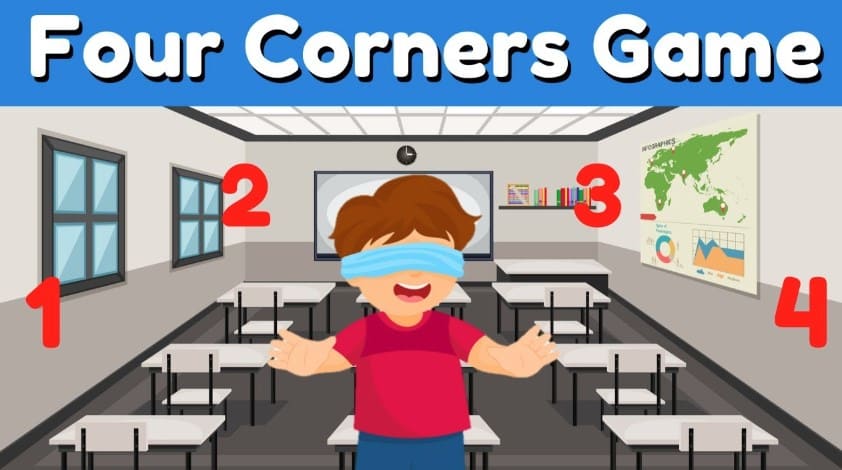
When the energy in the room starts to dip, you know, that post-lunch, heads-on-the-desks kind of vibe, that's your cue to pull out Four Corners.
13 Thumb Ball
The entertaining group game of Thumb Ball can be played in as little as fifteen minutes. Younger pupils who are honing their fine and gross motor abilities as well as their hand-eye coordination will particularly enjoy playing thumb ball.
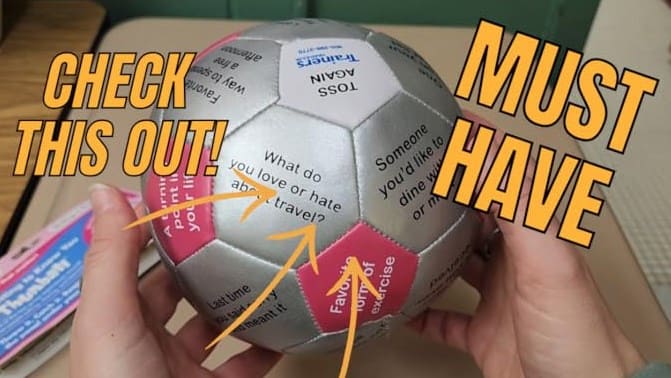
An inflatable beach ball and a marker are all you need. Clear a spot in your classroom so that every kid may sit in a circle. Next, write several questions on each colored beach ball portion before class begins.
When you're ready to play, place the pupils in a circle. Toss the ball to a pupil first. Tell them to respond to the question in the area where their right thumb touches when they catch it. Ask students to pass the ball to someone else if they drop it. Keep playing until everyone has had a chance to respond to a question.
14 Dictionary
Playing dictionary is a great way to introduce new words or go over words from the previous lesson. This game is perfect for athletic warm-ups because it will take you 15 to 20 minutes to finish!

Your students will only need a sheet of paper and a dictionary to play. Divide the class into groups of three. Assign a term to each group and ask them to define it using a dictionary. Ask them to write the definition on paper in their own words. Tell them to provide two fictitious definitions in addition to the actual one.
Invite each group to present their word after they have all completed. After listing all three definitions, the presenting group should ask the audience to guess which one it is. The winning team is the one that can fool other people into assuming the incorrect definitions.
15 Spelling Bee
Who knew you could get so much language learning done without feeling like you're in the middle of a vocab test?
Make a word list of some easy, some hard, and some just plain ridiculous words. Go around the room having each student in turn spell one. Keep all students standing. When a student spells a word incorrectly, have them sit down, yet urge them to stay in the game silently.
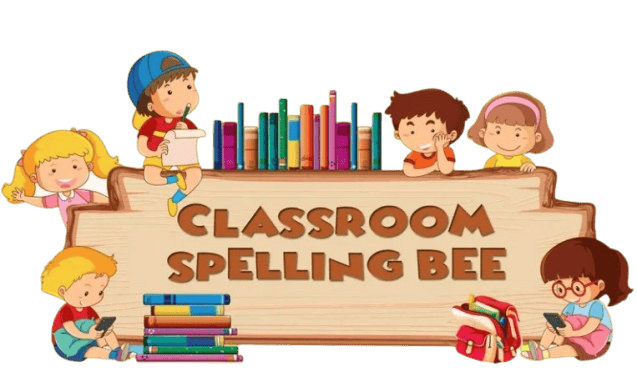
Have a small award prepared, even it is simply an absurd homemade "Word Wizard" certificate. It's amazing what a little paper trophy can do for classroom morale.
Bonus: How Parents and Teachers Can Control Kids' Screen Time
When it comes to kids and screen time, finding balance can feel like walking a tightrope. As a teacher or parent, you know that it's important to keep things educational, fun, and, of course, safe, especially during those moments when kids need a break or downtime.
AirDroid Parental Control is designed for parents and educators to manage and monitor the devices your children or students use, ensuring that they engage with age-appropriate content during their breaks.
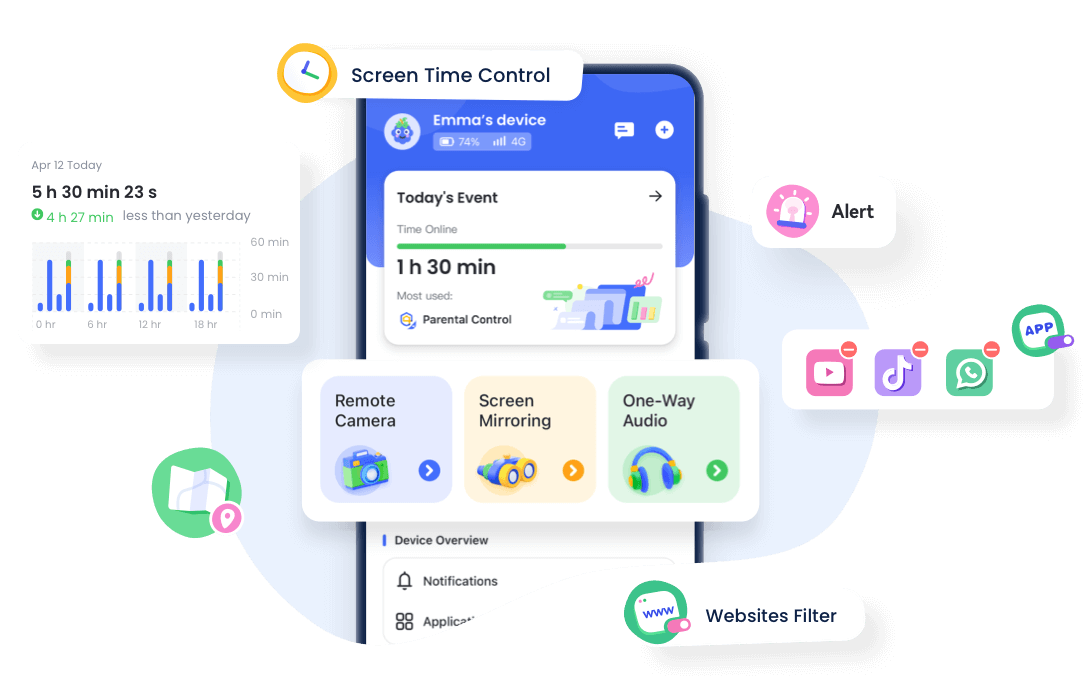
With AirDroid, you can:
- Monitor Screen Time: Track and limit screen time during or after class hours, ensuring kids are not overindulging in devices.
- Set Device Limits: Schedule downtime or break periods, giving kids a chance to engage in activities like the fun classroom games mentioned earlier, rather than spending all their time on their screens.
- Location Tracking: If kids are using devices outside the classroom, you can easily track their whereabouts, ensuring they are safe even during recess or after school.
- Content Filters: You can block harmful apps or websites, ensuring that kids don't stumble upon inappropriate content during their screen time.
AirDroid is a way to support a balanced, healthy digital routine for kids, whether they're in the classroom, on break, or relaxing at home. Because when it comes to kids, safe screen time should always come with a little extra peace of mind.
Conclusion
Games in the classroom are a fantastic method to develop lesson ideas that are well-rounded. Numerous games in the classroom have an artistic component that enables kids to express themselves creatively and generate novel ideas.
Different learning styles can be included into your curriculum by using classroom games. For example, engaging in an activity instead of reading or writing texts helps certain kids learn skills more efficiently.















Leave a Reply.